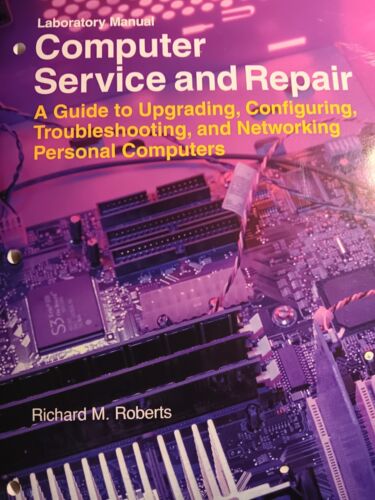Your cart is currently empty!
Tag: Troubleshooting

Cracking the Code: Mastering Root Cause Analysis in Data Center Troubleshooting
Data centers are the backbone of modern technology infrastructure, housing the servers and networking equipment that power our digital world. When something goes wrong in a data center, the effects can be severe, leading to downtime, lost revenue, and frustrated users. That’s why mastering root cause analysis in data center troubleshooting is crucial for IT professionals.Root cause analysis is a methodical process for identifying the underlying cause of a problem or issue. By digging deep into the layers of a problem, IT professionals can uncover the root cause and implement lasting solutions to prevent it from happening again in the future.
In the context of data center troubleshooting, root cause analysis is essential for quickly identifying and resolving issues that can disrupt operations. Whether it’s a server outage, network congestion, or a cooling system failure, understanding the root cause is the key to restoring service and preventing future incidents.
So how can IT professionals crack the code and master root cause analysis in data center troubleshooting? Here are some key steps to follow:
1. Define the problem: The first step in root cause analysis is to clearly define the problem at hand. What symptoms are being observed? What impact is it having on operations? By clearly defining the problem, IT professionals can focus their efforts on finding the root cause.
2. Gather data: Data is essential for root cause analysis. Collecting information about the problem, such as error logs, performance metrics, and network traffic data, can help IT professionals pinpoint the root cause.
3. Analyze the data: Once the data has been gathered, it’s time to analyze it to identify patterns or anomalies that could be causing the problem. Using tools such as network monitoring software or log analysis tools can help IT professionals make sense of the data.
4. Identify possible causes: Based on the analysis of the data, IT professionals can start to identify possible causes of the problem. This may involve looking at hardware failures, software bugs, configuration errors, or environmental factors that could be contributing to the issue.
5. Test hypotheses: Once possible causes have been identified, IT professionals can start testing hypotheses to determine which one is the root cause. This may involve making changes to the system or running diagnostic tests to see how the problem responds.
6. Implement solutions: Once the root cause has been identified, IT professionals can implement solutions to resolve the issue. This may involve replacing faulty hardware, reconfiguring software settings, or making changes to the data center environment.
7. Monitor and document: After implementing solutions, it’s important to monitor the system to ensure that the problem has been fully resolved. Keeping detailed documentation of the root cause analysis process and the solutions implemented can help IT professionals learn from past incidents and prevent similar issues in the future.
By following these steps, IT professionals can crack the code and master root cause analysis in data center troubleshooting. By understanding the underlying causes of problems and implementing lasting solutions, IT professionals can keep data centers running smoothly and minimize downtime and disruptions.

Troubleshooting System Center Configuration Manager by Egerton, Peter; Hampso…

Troubleshooting System Center Configuration Manager by Egerton, Peter; Hampso…
Price : 67.62
Ends on : N/A
View on eBay
Troubleshooting System Center Configuration Manager by Egerton, Peter; Hampson, GerryAre you experiencing issues with your System Center Configuration Manager (SCCM) deployment? Look no further than this comprehensive guide by Egerton and Hampson. In this book, the authors provide expert advice and practical solutions for troubleshooting common problems that may arise in SCCM.
From client installation issues to software distribution failures, this book covers it all. You’ll learn how to diagnose and resolve issues quickly and effectively, ensuring smooth operation of your SCCM environment. With step-by-step instructions and real-world examples, Troubleshooting System Center Configuration Manager is a must-have resource for IT professionals managing SCCM deployments.
Whether you’re a beginner or an experienced SCCM administrator, this book will help you navigate the complexities of troubleshooting and keep your systems running smoothly. Don’t let technical issues slow you down – pick up a copy of Troubleshooting System Center Configuration Manager today and take control of your SCCM environment.
#Troubleshooting #System #Center #Configuration #Manager #Egerton #Peter #Hampso..
Data Center Troubleshooting: How to Identify and Resolve Performance Issues
Data centers are the heart of any organization’s IT infrastructure, housing critical equipment and data that keep businesses running smoothly. However, even the most well-designed data centers can experience performance issues that can impact operations and result in downtime. When these issues arise, it is crucial for IT teams to quickly identify and resolve them to ensure the data center is operating at peak efficiency.There are several common performance issues that data centers may encounter, including slow response times, network congestion, hardware failures, and cooling system malfunctions. These issues can be caused by a variety of factors, such as inadequate capacity planning, misconfigurations, software bugs, or environmental factors. To effectively troubleshoot and resolve these issues, IT teams must follow a systematic approach that involves identifying the root cause of the problem and implementing appropriate solutions.
One of the first steps in troubleshooting data center performance issues is to monitor key performance metrics, such as CPU utilization, memory usage, network traffic, and storage capacity. By analyzing these metrics, IT teams can identify patterns and trends that may indicate the source of the problem. For example, if CPU utilization is consistently high, it may indicate that there is a bottleneck in the system that is causing slowdowns.
In addition to monitoring performance metrics, IT teams should also conduct regular audits of the data center infrastructure to ensure that all components are functioning properly. This includes checking for hardware failures, verifying that software is up to date, and ensuring that cooling systems are operating efficiently. By proactively addressing potential issues, IT teams can prevent performance issues from occurring in the first place.
When a performance issue does arise, IT teams should follow a systematic troubleshooting process to identify and resolve the problem. This process typically involves isolating the issue, gathering relevant data, analyzing the data to determine the root cause, and implementing a solution. For example, if network congestion is causing slow response times, IT teams may need to adjust network settings, upgrade bandwidth, or optimize traffic routing to improve performance.
In some cases, resolving data center performance issues may require the assistance of external vendors or specialists. For example, if a hardware failure is causing downtime, IT teams may need to work with the equipment manufacturer to replace the faulty components. By collaborating with experts in the field, IT teams can expedite the resolution process and minimize the impact on operations.
In conclusion, data center troubleshooting is a critical skill for IT teams to possess in order to ensure that the data center is running smoothly and efficiently. By monitoring performance metrics, conducting regular audits, and following a systematic troubleshooting process, IT teams can quickly identify and resolve performance issues, minimizing downtime and ensuring the continued success of the organization.

Top Tools for Data Center Troubleshooting and Monitoring
Data centers are the backbone of modern businesses, housing critical infrastructure and data that powers operations. With the increasing complexity and scale of data centers, troubleshooting and monitoring are crucial tasks to ensure smooth operations and prevent downtime. To effectively manage and maintain data center performance, IT professionals rely on a variety of tools that provide real-time insights and streamline troubleshooting processes. In this article, we will discuss some of the top tools for data center troubleshooting and monitoring.1. Nagios: Nagios is a popular open-source monitoring tool that enables IT teams to monitor infrastructure, applications, and services in real-time. It provides a centralized dashboard for monitoring network devices, servers, and applications, alerting administrators to any issues or anomalies that may arise. Nagios also offers customizable reporting and graphing capabilities, making it a versatile tool for data center monitoring.
2. SolarWinds Network Performance Monitor (NPM): SolarWinds NPM is a comprehensive network monitoring tool that provides deep visibility into network performance and health. It offers real-time performance metrics, alerting, and reporting features to help IT teams proactively identify and troubleshoot network issues. SolarWinds NPM also includes advanced features such as network mapping, traffic analysis, and device monitoring for comprehensive data center monitoring.
3. PRTG Network Monitor: PRTG Network Monitor is a powerful monitoring tool that offers a wide range of sensors for monitoring network devices, servers, applications, and bandwidth usage. It provides real-time monitoring and alerting capabilities, as well as historical data analysis for performance optimization. PRTG Network Monitor is known for its user-friendly interface and customizable dashboards, making it a popular choice for data center monitoring.
4. Wireshark: Wireshark is a widely-used network protocol analyzer that allows IT professionals to capture and analyze network traffic in real-time. It provides detailed insights into network packets, helping troubleshoot network performance issues, security breaches, and protocol errors. Wireshark is a valuable tool for data center troubleshooting, enabling IT teams to identify and resolve network issues quickly.
5. Cisco Unified Computing System (UCS) Manager: Cisco UCS Manager is a centralized management tool for Cisco UCS servers and infrastructure. It provides a unified dashboard for monitoring and managing servers, storage, and networking components in the data center. Cisco UCS Manager offers real-time performance monitoring, alerting, and configuration management features, helping IT teams streamline data center operations and troubleshooting.
In conclusion, data center troubleshooting and monitoring are essential tasks for ensuring optimal performance and reliability. By leveraging the right tools and technologies, IT professionals can proactively monitor, identify, and resolve issues to minimize downtime and improve data center efficiency. The tools mentioned in this article are just a few examples of the many options available for data center troubleshooting and monitoring, each offering unique features and capabilities to meet the needs of modern data center environments.

Data Center Troubleshooting 101: Essential Skills for IT Professionals
In today’s digital age, data centers play a crucial role in storing, processing, and managing the vast amounts of data that organizations rely on to operate efficiently. As such, it is essential for IT professionals to have the necessary skills to troubleshoot issues that may arise in data centers. Here are some essential skills that every IT professional should possess when it comes to data center troubleshooting.1. Understanding of Data Center Architecture
Before diving into troubleshooting, it is important for IT professionals to have a solid understanding of data center architecture. This includes knowledge of the different components within a data center, such as servers, storage devices, networking equipment, and cooling systems. Understanding how these components work together and how data flows through the data center is crucial for identifying and resolving issues.
2. Familiarity with Monitoring Tools
Monitoring tools are essential for keeping track of the performance and health of a data center. IT professionals should be familiar with the various monitoring tools available, such as Nagios, Zabbix, and SolarWinds. These tools can help identify potential issues before they escalate into major problems, allowing IT professionals to proactively address them.
3. Troubleshooting Network Connectivity Issues
Network connectivity issues are a common problem in data centers, and IT professionals should be well-versed in troubleshooting these issues. This includes checking for physical connectivity problems, verifying network configurations, and using tools like ping and traceroute to diagnose network connectivity issues. Understanding how data flows through the network and being able to identify bottlenecks are crucial skills for resolving network connectivity problems.
4. Diagnosing Server Performance Issues
Server performance issues can have a significant impact on the overall performance of a data center. IT professionals should be able to diagnose server performance issues by monitoring CPU usage, memory usage, disk I/O, and network traffic. They should also be familiar with server monitoring tools like SNMP and WMI, which can provide valuable insights into server performance metrics.
5. Identifying Storage System Problems
Storage system problems can also cause major disruptions in a data center. IT professionals should be able to troubleshoot storage system issues by checking for hardware failures, verifying storage configurations, and monitoring storage usage. Familiarity with storage management tools like RAID controllers and SAN/NAS management software is essential for diagnosing and resolving storage system problems.
6. Resolving Cooling and Power Issues
Cooling and power issues can have a significant impact on the reliability and performance of a data center. IT professionals should be able to identify cooling and power problems by monitoring temperature and power consumption levels, checking for faulty cooling equipment, and ensuring that power distribution is properly configured. Understanding the relationship between cooling, power, and overall data center performance is essential for keeping the data center running smoothly.
In conclusion, data center troubleshooting requires a combination of technical knowledge, analytical skills, and hands-on experience. By developing these essential skills, IT professionals can effectively diagnose and resolve issues in data centers, ensuring that critical data and services remain available and secure.

COMPUTER SERVICE AND REPAIR: A GUIDE TO TROUBLESHOOTING, By Richard M. Roberts

COMPUTER SERVICE AND REPAIR: A GUIDE TO TROUBLESHOOTING, By Richard M. Roberts
Price :120.00– 30.00
Ends on : N/A
View on eBay
Are you experiencing issues with your computer but don’t know where to start troubleshooting? Look no further! In this guide, computer expert Richard M. Roberts provides step-by-step instructions on how to diagnose and fix common computer problems.From slow performance to unexpected shutdowns, Roberts covers a wide range of issues that can plague your computer. With his easy-to-follow instructions, you’ll be able to identify the root cause of the problem and take the necessary steps to resolve it.
Whether you’re a novice or a tech-savvy individual, this guide is a valuable resource for anyone looking to keep their computer running smoothly. Say goodbye to frustrating technical issues and hello to a well-functioning computer with Roberts’ troubleshooting tips.
Don’t let computer problems slow you down – pick up a copy of “Computer Service and Repair: A Guide to Troubleshooting” today and get your computer back on track!
#COMPUTER #SERVICE #REPAIR #GUIDE #TROUBLESHOOTING #Richard #Roberts
Best Practices for Data Center Troubleshooting: Strategies for Success
Data centers are the backbone of modern businesses, providing the infrastructure necessary to store and manage large amounts of data. However, even the most well-designed data centers can experience issues that can disrupt operations and cause downtime. That’s why having a solid troubleshooting strategy in place is essential for maintaining the performance and reliability of your data center.Here are some best practices for data center troubleshooting that can help you quickly identify and resolve issues:
1. Monitor regularly: One of the most important aspects of troubleshooting is being proactive. By regularly monitoring the performance of your data center, you can identify potential issues before they escalate into major problems. Use monitoring tools to track key metrics such as server performance, network traffic, and storage capacity.
2. Document everything: Keeping detailed documentation of your data center infrastructure, configurations, and changes is essential for troubleshooting. This information can help you quickly identify the root cause of issues and track changes that may have contributed to the problem.
3. Establish clear communication channels: When an issue arises, it’s important to have a clear communication plan in place. Make sure all team members know who to contact in case of a problem and establish a protocol for reporting and escalating issues.
4. Use a systematic approach: When troubleshooting data center issues, it’s important to follow a systematic approach to avoid missing important steps. Start by gathering information about the problem, analyzing possible causes, and testing potential solutions. Document each step of the troubleshooting process to track progress and ensure nothing is overlooked.
5. Collaborate with vendors and partners: If you’re unable to resolve an issue on your own, don’t hesitate to reach out to your vendors or partners for assistance. They may have the expertise and resources necessary to help you quickly resolve the problem and minimize downtime.
6. Learn from past incidents: After resolving an issue, take the time to review what went wrong and identify ways to prevent similar problems in the future. By learning from past incidents, you can improve your troubleshooting processes and build a more resilient data center infrastructure.
By following these best practices for data center troubleshooting, you can effectively manage and resolve issues that may arise in your data center. With a proactive approach and clear communication, you can minimize downtime and ensure the performance and reliability of your data center infrastructure.

Computer Service and Repair : A Guide to Upgrading, Configuring, Troubleshooting

Computer Service and Repair : A Guide to Upgrading, Configuring, Troubleshooting
Price :100.00– 25.00
Ends on : N/A
View on eBay
Computers are an essential part of our daily lives, whether it’s for work, entertainment, or communication. However, like any other electronic device, they can encounter issues and problems that need to be addressed. Whether it’s a slow performance, a virus infection, or a hardware malfunction, knowing how to service and repair your computer can save you time and money.In this guide, we will cover the basics of computer service and repair, including upgrading, configuring, and troubleshooting common issues. By following these tips and techniques, you can keep your computer running smoothly and efficiently.
Upgrading:
Upgrading your computer can improve its performance and extend its lifespan. Whether you want to add more RAM, upgrade your storage, or install a new graphics card, knowing how to upgrade your computer can be a cost-effective way to enhance its capabilities. Before upgrading any component, make sure to research compatibility and ensure that you have the necessary tools and knowledge to safely install the new hardware.
Configuring:
Configuring your computer involves setting up its software and hardware to meet your specific needs. This can include customizing settings, installing updates, and optimizing performance. By configuring your computer correctly, you can ensure that it runs smoothly and efficiently. Make sure to regularly check for software updates, optimize your startup programs, and clean up your disk space to maintain peak performance.
Troubleshooting:
When your computer encounters issues, troubleshooting is essential to identify and fix the problem. Common issues include slow performance, freezing, crashes, and error messages. By following a systematic approach, you can diagnose and resolve these issues effectively. Start by checking for software updates, scanning for viruses and malware, and testing hardware components. If the issue persists, seek professional help or consult online resources for further guidance.
In conclusion, computer service and repair are essential skills for any computer user. By understanding how to upgrade, configure, and troubleshoot your computer, you can ensure that it runs smoothly and efficiently. Remember to regularly maintain your computer, back up your data, and seek professional help when needed. With these tips and techniques, you can keep your computer in top condition and avoid costly repairs in the future.
#Computer #Service #Repair #Guide #Upgrading #Configuring #Troubleshooting
Troubleshooting Data Center Problems: A Step-by-Step Approach
Data centers are the heart of any organization’s IT infrastructure, housing critical hardware and software that keep businesses running smoothly. However, like any complex system, data centers can encounter problems that disrupt operations and lead to costly downtime. In this article, we will discuss a step-by-step approach to troubleshooting data center problems and minimizing their impact on your organization.Step 1: Gather Information
The first step in troubleshooting data center problems is to gather as much information as possible about the issue at hand. This may include error messages, performance metrics, and any recent changes or updates that may have affected the system. By understanding the context of the problem, you can better identify potential causes and solutions.
Step 2: Identify the Problem
Once you have gathered relevant information, the next step is to identify the root cause of the issue. This may involve conducting tests, analyzing logs, or consulting with team members who are familiar with the system. By pinpointing the problem, you can focus your efforts on finding a solution rather than wasting time on irrelevant troubleshooting steps.
Step 3: Develop a Plan
With the problem identified, it is important to develop a plan for resolving it. This may involve implementing temporary workarounds to minimize downtime, scheduling maintenance tasks, or deploying software updates to fix the issue. By creating a clear and actionable plan, you can ensure that troubleshooting efforts are efficient and effective.
Step 4: Implement Solutions
Once a plan has been developed, it is time to implement solutions to resolve the data center problem. This may involve restarting servers, reconfiguring network settings, or deploying patches to fix software bugs. It is important to follow best practices and document all changes made to the system to ensure that troubleshooting efforts are successful.
Step 5: Test and Monitor
After implementing solutions, it is important to test the system to ensure that the problem has been resolved. This may involve running performance tests, monitoring system logs, and conducting user acceptance testing to verify that the issue has been fixed. By testing and monitoring the system, you can be confident that troubleshooting efforts have been successful and that the data center is operating as expected.
In conclusion, troubleshooting data center problems requires a systematic approach that involves gathering information, identifying the problem, developing a plan, implementing solutions, and testing and monitoring the system. By following these steps, organizations can minimize downtime, reduce costs, and ensure that their data center infrastructure remains reliable and secure.

Troubleshooting System Center Configuration Manager by Egerton, Peter; Hampso…

Troubleshooting System Center Configuration Manager by Egerton, Peter; Hampso…
Price : 67.63
Ends on : N/A
View on eBay
Troubleshooting System Center Configuration Manager by Egerton, Peter; Hampson, GerryIf you’re struggling with System Center Configuration Manager (SCCM) and can’t seem to find a solution to your issues, this post is for you. Egerton and Hampson, two seasoned IT professionals, have teamed up to provide a comprehensive guide to troubleshooting SCCM.
In this post, you’ll learn:
– Common issues and their solutions
– Tips and tricks for troubleshooting SCCM
– Best practices for maintaining a healthy SCCM environment
– How to effectively use logs and other diagnostic toolsWhether you’re a beginner or an experienced SCCM administrator, this post will provide you with the knowledge and tools you need to effectively troubleshoot any problems that may arise. Don’t let SCCM issues slow you down – with Egerton and Hampson’s expert guidance, you’ll be able to quickly identify and resolve any issues that come your way.
#Troubleshooting #System #Center #Configuration #Manager #Egerton #Peter #Hampso..
